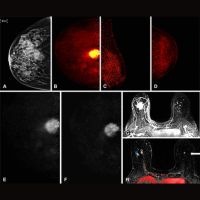Breast cancer remains a significant health concern, standing as the second leading cause of cancer-related deaths among women in the United States. Despite advancements in detection and treatment, the impact of breast cancer continues to be substantial, with projections indicating over 353,500 new cases and approximately 43,700 deaths expected in 2023 alone. Encouragingly, consistent participation in screening mammography has demonstrated the potential to reduce breast cancer deaths by 40% or more. However, only approximately 70% of eligible women report having a mammographic examination (screening or diagnostic) in the past 2 years, highlighting the fact that challenges persist in achieving optimal screening rates and navigating the complexities of screening guidelines.
CISNET can offer insights on screening strategies evolution
A critical aspect of breast cancer screening lies in determining the most effective strategies to balance benefits and risks. The United States Preventive Services Task Force (USPSTF) plays a central role in shaping screening recommendations, yet its guidelines have evolved over time, influencing national screening participation rates. Recent shifts in recommendations, particularly regarding the initiation age and screening frequency, have sparked debates within the medical community. The Cancer Intervention and Surveillance Modeling Network (CISNET) serves as a valuable resource in this discourse, offering insights through sophisticated modeling analyses. By comparing CISNET's estimates across different years, this study aimed to discern trends in breast cancer screening outcomes and shed light on optimal screening strategies. Models are limited by their underlying assumptions, such as how tumours progress, but can be advantageous for exploring screening scenarios for which clinical trial data are unavailable
Four long-term screening scenarios were in CISNET’s focus
CISNET modeling estimates of breast cancer screening with mammography were performed in 2009, 2016, and 2023. Modeling estimates are determined using population and breast cancer incidence data from the Surveillance, Epidemiology, and End Results (SEER) Program and mammographic data from the Breast Cancer Surveillance Consortium (BCSC).
The first scenario is biennial screening of women ages 50–74 years, which corresponds to the 2009 and 2016 USPSTF recommendations. The second scenario is biennial screening of women ages 40–74 years, which corresponds to the 2023 USPSTF draft recommendation. The third scenario is annual screening of women ages 40–74 years, using the 2023 USPSTF age range but with an annual screening interval. The fourth scenario is annual screening ages 40–79 years, which approximates the recommendations of the American College of Radiology, Society of Breast Imaging, and National Comprehensive Cancer Network. The fourth scenario is only an approximation as these organizations do not specify a stopping age, recommending continued screening as long as a woman is healthy.
Optimal age range and cadence for mammography screening
Researchers found that annual screening between 40 to 79 years of age had the highest percentage of breast cancer mortality reduction (41.7 percent) in comparison to 37 percent for annual screening between the ages of 40-74, 30 percent for biennial screening between 40 and 74 years of age, and 25.4 percent for biennial screening between 50 to 74 years of age.
Analysis of CISNET modeling estimates from 2009, 2016, and 2023 revealed noteworthy patterns. The most recent estimates underscored the advantages of initiating annual mammographic screening at 40 years of age and extending it to 79 years and beyond. Notably, such an approach was projected to yield the highest mortality reduction, breast cancer deaths averted, and life-years gained, particularly benefitting Black women. While the USPSTF draft recommendation of biennial screening for women aged 40-74 showed promise, transitioning to annual screening could significantly enhance mortality reduction. Moreover, extending screening beyond 74 years of age was deemed beneficial, aligning with the recommendations of leading medical organizations.
Estimates showed that annual mammography for women between the ages of 40 and 79 would result in gaining 230 life-years per 1,000 screening exams, nearly double the estimate of life-years gained with biennial screening between 50 to 74 years of age (121 life-years).
False positives and the risk-benefit balance
Despite the benefits of annual screening, concerns regarding false-positive results and benign biopsies persist. However, per-examination risks were found to be manageable, with annual screening demonstrating the lowest risk on this basis. This underscores the importance of considering not only the benefits but also the risks associated with screening protocols.
The study authors found that annual mammography conducted between the ages of 40 and 79 had the lowest false-positive rate, standing at 6.5 percent. In comparison, they observed that biennial screening for women aged 50 to 74 resulted in a 7.8 percent false-positive rate, while biennial screening spanning from 40 to 74 years of age was linked to an 8.3 percent false-positive rate.
It's essential to acknowledge the limitations of this study, including the inherent assumptions and uncertainties within CISNET models. Furthermore, the analysis primarily focused on median estimates, reflecting general trends rather than individual variations. However, CISNET modeling provides valuable insights into breast cancer screening outcomes, informing the evolution of screening guidelines. The findings advocate for a proactive approach, emphasizing the importance of annual screening starting at 40 years of age and extending beyond current age limits. By optimizing screening strategies, we can strive towards reducing the burden of breast cancer and saving lives.
Source: RSNA Radiology
Image Credit: iStock

























